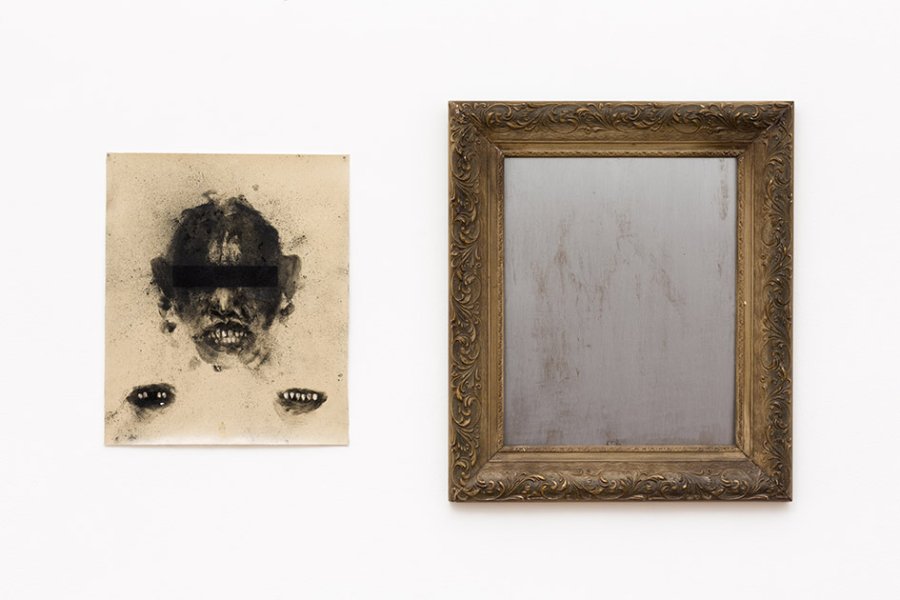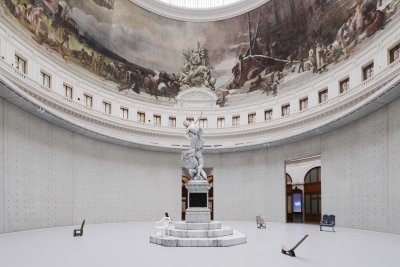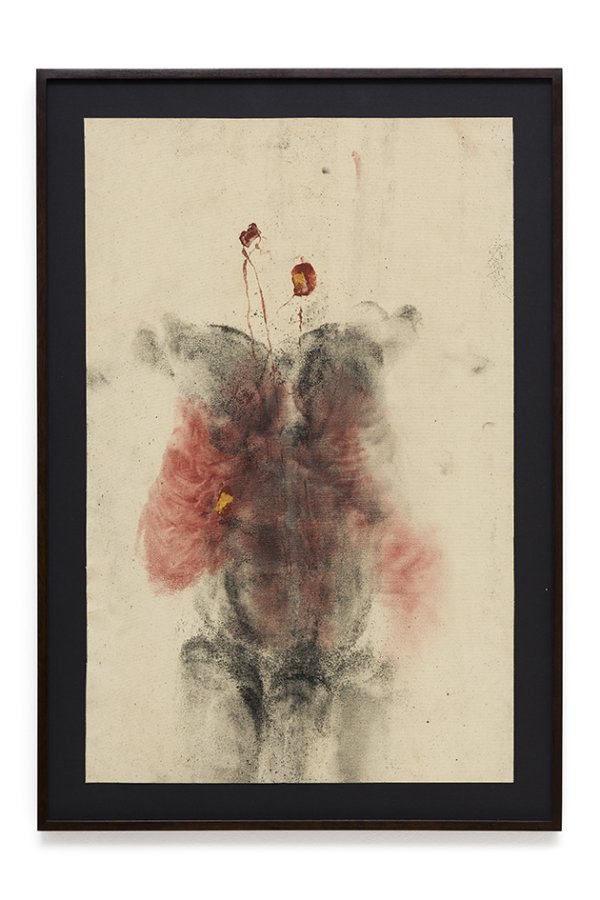Um Saci, da série Ambiente com Espelhos
Charcoal on cotton canvas, antique wooden frame and brussed steel
61 × 104 cm (24 × 40 15/16 in.)
Taken from the series Ambiente com espelhos, which means “environment with mirrors,” this work is part of Antonio Oba's reflection on the process of identity construction. The Brazilian artist places a framed mirror with a tarnished reflection side by side with a drawing showing the imprint of a grimacing face whose gaze is obscured.
The title of the work, Um Saci, refers to the painted subject and pays homage to the tragic and sordid fate of Ota Benga, a young Congolese man who was held in captivity at the Bronx Zoo in the early twentieth century. One of Ota Benga's physical characteristics, which helped justify his imprisonment and feed the fantasy of the savagery of the “primitive man,” were his filed teeth, which Westerners interpreted at the time as evidence of cannibalistic practices when it was merely a sign of identity for the Pygmy people of the Congo. His forced smile, displaying his teeth, was captured in numerous photographs of the period. It is to these images that Antonio Oba refers, elevating Ota Benga to the rank of Saci, a syncretic and mischievous creature of Brazilian folklore who haunts unwary travellers with his nocturnal laughter and is often perceived as a symbol of resistance.
Oba deals here with the denial of the identity of the descendants of slaves in Brazil; both elements of this work deny our gaze, inviting us to “polish” the mirror with our personal and collective histories in order to find and build this identity of which the Black people in Brazil have been dispossessed. He draws on an imaginary world where myth, history, and religion merge, and weaves, with great freedom, the fabric of a story that goes beyond the limits of a hermetic interpretation.





